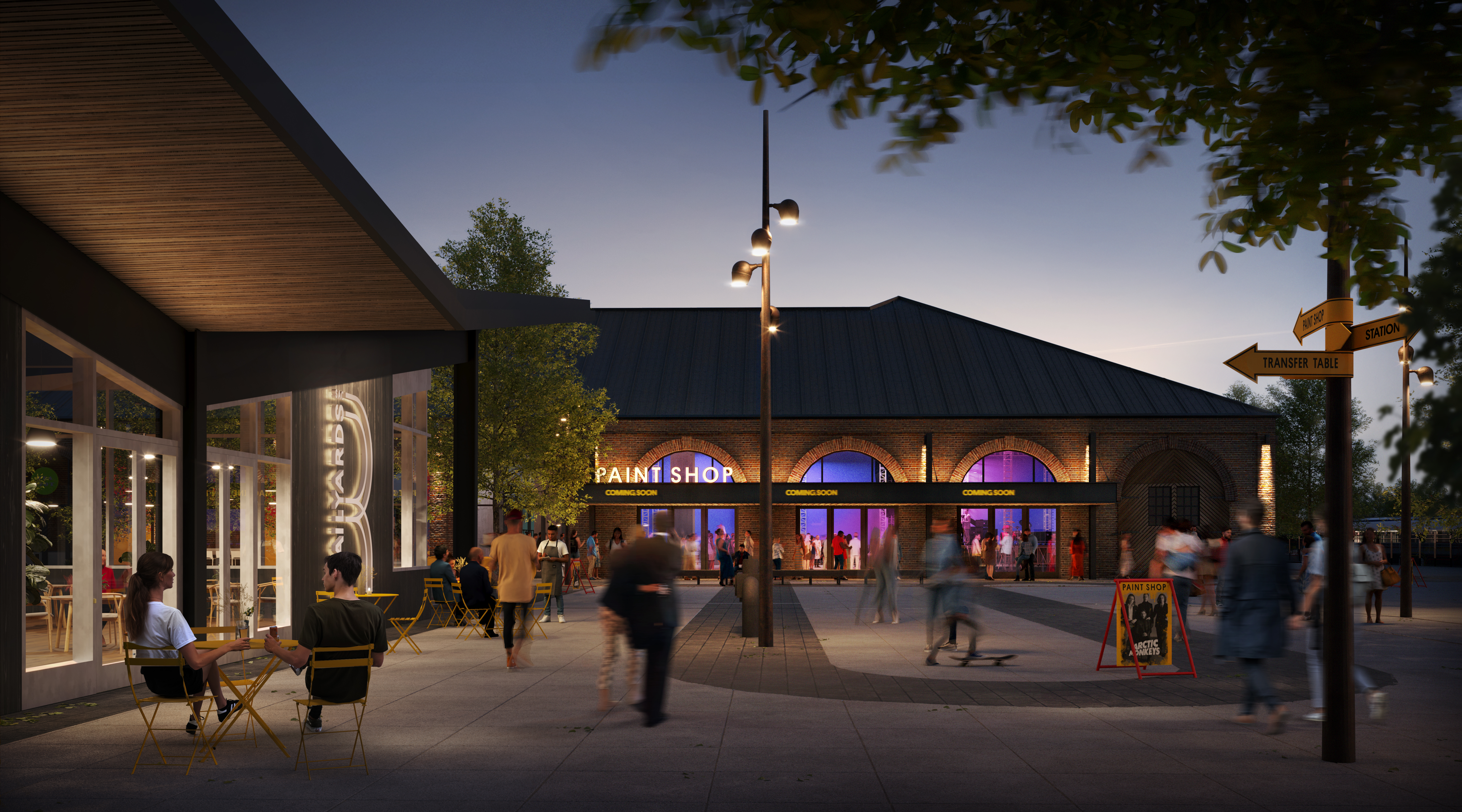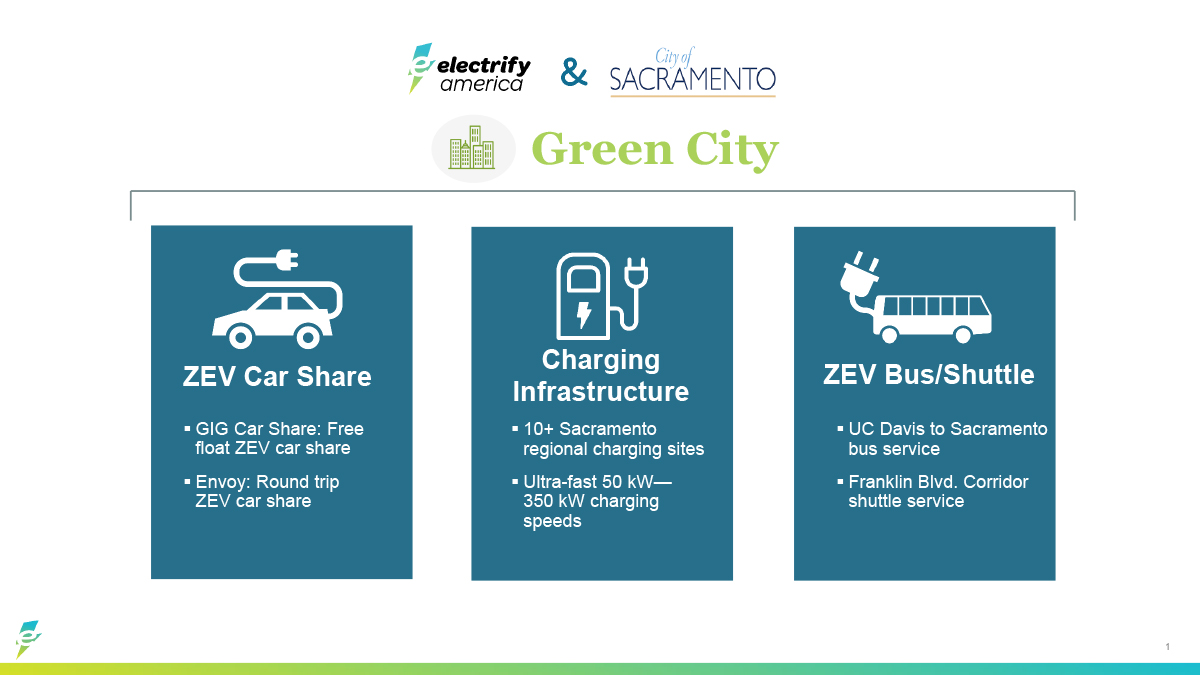
April 25, 2022 / Author: the Railyards
Discover 5 ways that Sacramento is taking strides to be a more sustainable city.
Image courtesy of Coruscating Images
Sacramento has a goal of being The Most Livable City In America, and part of that goal means becoming a greener, more sustainable city. Discover some of the ways Sacramento is taking strides to be more sustainable and ecofriendly.
Electric Vehicle Initiatives
Sacramento is electric.
For over 20 years, Sacramento has been a leader in the deployment of electric vehicles (EVs). The City Council adopted a policy that first established the City’s EV Parking Program in 1994, providing discounted parking to EV drivers in City-owned parking garages.
Since then, the City has been working actively to provide public EV charging at City facilities, aggressively incorporate low-emission vehicles and zero-emission vehicles (ZEV) into fleet operations, and support EVs in the community.
Learn more about Sacramento EV Initiatives
The city was designated as the first Green City by Electrify America (a Volkswagen subsidiary) in its Zero-Emission Vehicle (ZEV) Investment plan.
Electrify America invested $44 million in Sacramento to install charging infrastructure for electric vehicles, in addition to community outreach and education and to implement programs designed to increase access to and use of ZEVs.
Walkable Communities
Sacramento features many walkable communities. Walkable communities encourage pedestrian activity, expand transportation options, and have safe and inviting pedestrian infrastructure that is accessible and serves people of all ages and abilities.
When sidewalks, parks, and trails are pleasant to walk, all community members benefit; walkable neighborhoods improve resident health and have positive environmental benefits.
Sacramento’s most walkable neighborhoods include:
- Midtown - walk score 94
- Downtown - walk score 93
- Hollywood park - walk score 82
- Old North Sacramento - walk score 82
- North Oak Park - walk score 82
Sacramento’s upcoming Railyards community is being designed with walkability in mind. The Railyards Specific Plan calls for the area to be an active, walkable community, with streets, blocks, and land uses that encourage pedestrian and cycling activity.
Alternative Transportation Modes
Transportation can shape development, communities, property values, and economic opportunity. In addition, transportation investments can have important consequences for the environment.
When homes, offices, retail, entertainment, and civic buildings are near transportation and close to one another, it makes it more convenient to walk, bike, or take alternative (non-auto) modes of transit. These expanded transportation choices make it easier to get more physical activity, reduces transportation costs, and gives more freedom of mobility to senior, disabled, and low-income individuals.
The Sacramento Valley Station sits on the Southern border of The Railyards development and serves as the region’s transit hub.
The station connects transit riders to AMTRAK, light rail, electric bike rentals, and a future expansion line for a streetcar system. The Sacramento Valley Station recently underwent a $30 million renovation to become a state-of-the-art operation for multiple modes of transportation - right at the edge of The Railyards development.
Organics Recycling
Food waste is the single most common material landfilled and incinerated in the U.S., according to the Environmental Protection Agency (EPA).
- In the U.S., food waste comprises 24% of landfilled waste and 22% of combusted municipal solid waste.
- Globally, food waste accounts for 8% of greenhouse gas emissions.
Californians throw away nearly 6 million tons of food scraps each year, accounting for 15%-20% of all landfilled material. California Senate Bill 1383 is a state mandate requiring the recycling of organic matter to reduce short-lived climate pollutants in landfills.
This summer, households across the Sacramento region will make changes in their food disposal habits effective July 1, 2022.
After July 1, residents in the City of Sacramento must dispose of food scraps, food-soiled paper, and yard waste together in the organic waste container (currently the yard/green waste container). Organic waste will be collected weekly for all customers on the same day as garbage collection.
Organic waste includes food waste—such as fruit and vegetable scraps, eggshells, meat, and bones—and food-soiled paper, including pizza boxes, coffee filters, and paper napkins.
The organic waste will be processed into nutrient-rich compost and then sold to agricultural users. In the future, some of the compost may be made available to City residents at giveaways and other events.
Learn more about Sacramento’s organics recycling program.
Water Conservation
37.3 million people in California are affected by drought. 2022 is the driest year in the last 128 years, making water conservation essential for those who live in the state’s Capital and beyond.
Water conservation is a high priority for Sacramento County. Sacramento County conserves water every day in and around County buildings and on County properties. Sacramento County has been working steadily to reduce the amount of water used in operations by reducing landscape irrigation, installing low-use plumbing fixtures, and reducing the watering of parks.
City of Sacramento Mayor Darrell Steinberg asked Sacramento residents to participate in the National Mayor’s Challenge for Water Conservation, a water-saving contest held nationwide in April.
“As California enters its third year of drought, communities must work together to reduce water consumption, so I’m asking everyone to take the challenge,” Steinberg said. “We won this challenge two years back, and I know we can do it again.”
To participate, residents can go to MyWaterPledge.com from April 1 to 30 and make a series of online pledges to conserve water.
The City of Sacramento has participated in the challenge for the past four years and took first place in 2020.
“You can pledge to save water by shortening your shower times, fixing leaks, or using less water on your lawn,” Steinberg said.
Top Ways to Save Water in Sacramento
- Install high-efficiency washing machines and low flow toilets—check your water purveyor’s website for rebate opportunities
- Running washing machines and dishwashers only when full
- Installing aerators on faucets and using low-flow showerheads to cut down on excess water flow
- Checking toilets, faucets, and valves for any leaks
- Turning sprinklers off in the winter
- Following your water purveyors irrigation schedule
- Watering landscape between 8 pm and 6 am when evaporation is lowest
- Shutting off the water while brushing teeth or shaving
- Reducing shower times to 5 minutes and avoiding baths—which can use up to 70 gallons of water
Learn more about the National Mayor’s Challenge for Water Conservation.
Supporting a Sustainable Sacramento
How can you support Sacramento in becoming a more sustainable city? When you take steps to lessen your environmental impact, the personal benefits follow.
Conserving energy and water can reduce utility bills, putting more money in your pocket, for example.
Healthier cities equal healthier residents. Studies have found that the average resident of a walkable neighborhood is less at risk for obesity, diabetes, and heart disease than their counterparts in sprawling neighborhoods. And a 1993 research study, the landmark Six Cities Study, established a clear association between air pollution and mortality.
Take steps to create a more sustainable Sacramento, and you’ll take steps that benefit your wallet and personal health, as well.












